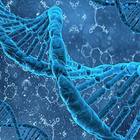
当科学家打算用DNA存储数据,会碰撞出什么样的火花
介绍: Storing computer data in DNA
Nature’s data-preservation medium may soon have a new use
Dna is the oldest information-storage system known. It predates every other,from pencil and paper to computer hard drives, by billions of years. But attempts to employ it to store data generated by people,as opposed to dat...
介绍: Storing computer data in DNA
Nature’s data-preservation medium may soon have a new use
Dna is the oldest information-storage system known. It predates every other,from pencil and paper to computer hard drives, by billions of years. But attempts to employ it to store data generated by people,as opposed to data needed to bring those people (and every other living thing) into being in the first place, have failed.
The reason is not so much technological difficulty as cost. Encoding a single gi-gabyte in dna would run up a bill of several million dollars. Doing so on a hard drive costs less than a cent. Catalog, a biotechnology firm in oston, hopes to bring the cost of dna data-storage below $10 per gi-gabyte. That is still on the pricey side. But for really large storage requirements a second ratio also comes into play: gigabytes stored per cubic metre.
Hard drives take up space. Their storage ratio is about 30m gigabytes per cubic metre. Catalog’s method can store 600bn giga-bytes in the same volume. For organisations such as film studios and particle-physics laboratories, which need to archive humongous amounts of information indefinitely, the ratio of the two ratios, as it were, may soon favour dna.
particle英 [ˈpɑ:tɪkl] 美 [ˈpɑ:rtɪkl]n.微粒,颗粒;[数,物]粒子,质点;极小量;小品词particle-physics粒子物理学,因此粒子物理学也被称为高能物理学。
humongous英 [hju:ˈmʌŋgəs] 美 [hjuˈmɑŋɡəs, -ˈmʌŋ-]adj.极大的,其大无比的 as it were 在某种程度上说
The obvious temptation when designing a dna-based storage system is to see the ones and zeros of binary data and the chemical base pairs (AT and GC) of deoxyribose nucleic acid as equivalent, and simply to translate the one into the other, with each file to be stored corresponding to a single, large dna molecule.
binary 二进制
deoxyribose英 [di:ˌɒksɪ'raɪbəʊs] 美 [di:ˌɒksɪ'raɪboʊs]n.去氧核醣
nucleic acid英 [nju:ˌkli:ɪk ˈæsɪd] 美 [nu:ˌkli:ɪk ˈæsɪd]n.核酸
molecule 英 [ˈmɒlɪkju:l] 美 [ˈmɑ:lɪkju:l]n.分子;微小颗粒
Unfortunately,this yields molecules that are hard for sequencing machines to read when the time comes to look at what data the dna is encoding. In particular, there are places in computer data that consist of long strings of either ones or zeros. Dna sequencers have difficulty when faced with similarly monotonous strings of base pairs.
Catalog has taken a different tack. The firm’s system is based on 100 different dna molecules, each ten base pairs long. The order of these bases does not, however, encode the binary data directly. Instead, the company pastes these short dna molecules together into longer ones. Crucially,the enzyme system it uses to do this is able to assemble short molecules into long ones in whatever order is desired. The order of the short molecular units within a longer molecule encodes, according to a rule book devised by the company, the data to be stored. Starting with 100 types of short molecule means trillions of combinations are possible within a longer one. That enables the long molecules to contain huge amounts of information.
enzyme英 [ˈenzaɪm] 美 [ˈɛnzaɪm]n.[生化]酶
The cost savings of Catalog’s method come from the limited number of molecules it starts with. Making new Dna molecules one base pair at a time is expensive,but making copies of existing ones is cheap, as is joining such molecules together. The Catalog approach also means it is harder for data to be misread. Even if a sequencing machine gets a base or two wrong, it is usually possible to guess the identity of the ten-base-pair unit in question, thus preserving the data.
Catalog’s combinatorial approach does mean that more dna is needed per byte stored than other dna -based methods require. This increases both the time and the cost of reading it to recover the stored data in electronic form for processing. Overall,though, the method promises to have significant advantages over its predecessors.
The next task is to translate that promise into reality. To this end, Catalog is working with Cambridge Consultants, a British technology-development firm, to make a prototype capable of writing about 125 gigabytes of data to dna every day. If this machine works as hoped (it is supposed to be ready next year), the company intends to produce a more powerful device,able to write 1,000 times faster, within three years. The second age of dna information storage may then, at last, begin.




